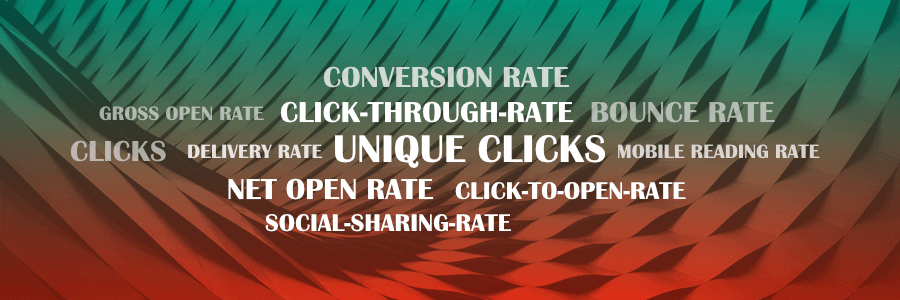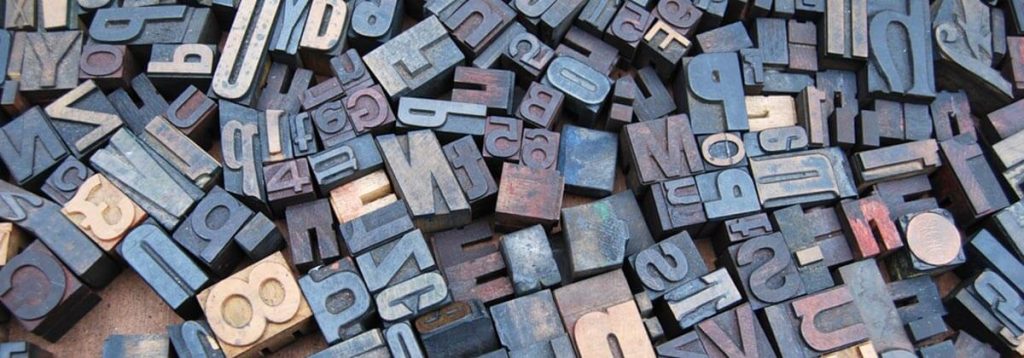
It happens all the time: an e-newsletter with content tailored specifically towards a target group mysteriously turns out to be a flop for unknown reasons. The root cause analysis begins, covering analyses of the open rate [OR], click-through rate [CTR] and click-to-open rate [CTOR]. And then it dawns on the person in charge: “If only I had carried out a test before sending it out!”
On the basis of an example, I will demonstrate in this blog entry how a preview test can improve the open rate. Following the four suggestions will help you avoid nasty surprises and make your direct e-mail campaign more successful.
Images within a newsletter are the icing on the cake
Nowadays, most commercial newsletters combine copy text and images. Balancing these two elements makes an e-newsletter more reader-friendly than a plain e-mail and thus arouses the interest of the readers. However, if important text is integrated into images that are embedded into the e-newsletter, problems can emerge.
Three options for displaying images in a newsletter
The following three techniques are the most common. Which one to choose usually depends on the nature of the newsletter:
Linked images
This technique does not integrate the images into the HTML of the e-mail but leaves them located on a web server. From there, the images are retrieved when the e-newsletter is opened and subsequently displayed in the designated position within the e-newsletter
Advantage: The resulting smaller file size of the e-newsletter can improve the delivery rate. This is particularly important for e-newsletters containing many and/or large images.
Disadvantage: Current e-mail programs such as Outlook or Thunderbird are, by default, set to suppress the automatic loading of remote images. In this case the e-newsletter appears fragmented and can only be viewed properly if the recipient actively retrieves the images.
Embedded images
In this option, the images become part of the e-mail’s HTML code. The recipient will immediately see a perfectly arranged e-newsletter.
Advantage: The e-newsletter is instantly displayed in its entirety in all relevant e-mail programs.
Disadvantage: Depending on the sizes of the embedded images, the e-mail may become very large and significantly exceed the recommended maximum file size of 300 kB. The file sizes of all contained images should be reduced as far as possible. This can easily be done by using tools like TinyPNG. We introduced you to other such software tools in the blog entry “Image optimisation for faster loading times”.
A combination of linked and embedded images
Combining the first two techniques can be an interesting option. In this case, a few important images like the company logo can be embedded while others are linked.
Advantage: The recipients instantly get an impression of what the e-newsletter looks like. If they are interested they can actively retrieve the non-embedded images.
Disadvantage: The recipient must still become active to view the entire e-newsletter.
Roman Schiffelholz from the company Inxmail wrote a blog entry about the image display profiles of typically used e-mail clients:
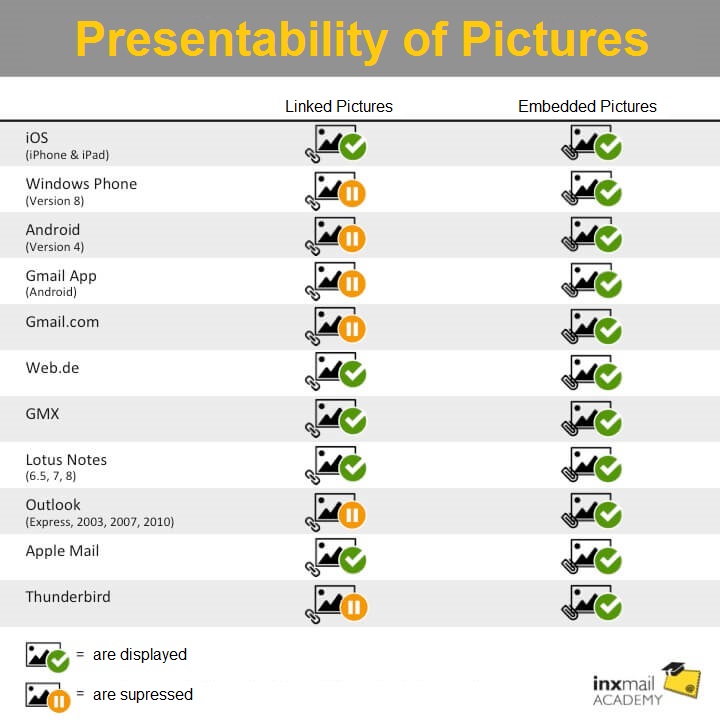
Representability of images: Linked images (left) vs. embedded images (right)
Contentless newsletter due to missing images
A newsletter without any content? Hard to believe, but that does happen quite often. The outcome: precious time of the marketing managers who created the e-newsletter has been wasted. Worse still: the mail shot will have achieved below average open and click-through rates and not fulfilled its objectives. On top of this, contentless e-newsletters tend to irritate their recipients. No prizes for guessing what all this means for the company’s image.
Bad practice: all relevant content linked as a single image
The following real-life example illustrates the problem. When I recently glanced over my incoming e-mails, I saw one from a company I am unfamiliar with. However, I found the subject of the e-newsletter interesting.
I was curious and so I looked inside the preview window of my e-mail client. But there was only irrelevant text. I’m a busy person, so I give myself no more than a split second to decide: load the remote images for (hopefully) further content or delete the e-mail straight away.
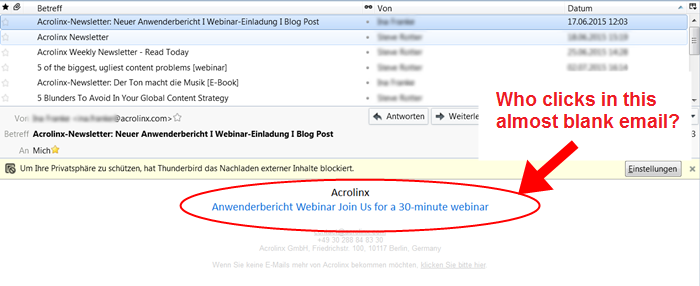
Bad example: a lack of content do not invite to click
For companies who do not yet have a firm place in the minds of their e-newsletter recipients, this is where the journey ends. The newsletter will not be read and deleted. It will be the same procedure when the next e-newsletter comes, with the risk increasing that the sender will be blacklisted as a spammer.
This is what the same e-mail looks like after the images have been loaded or embedded:
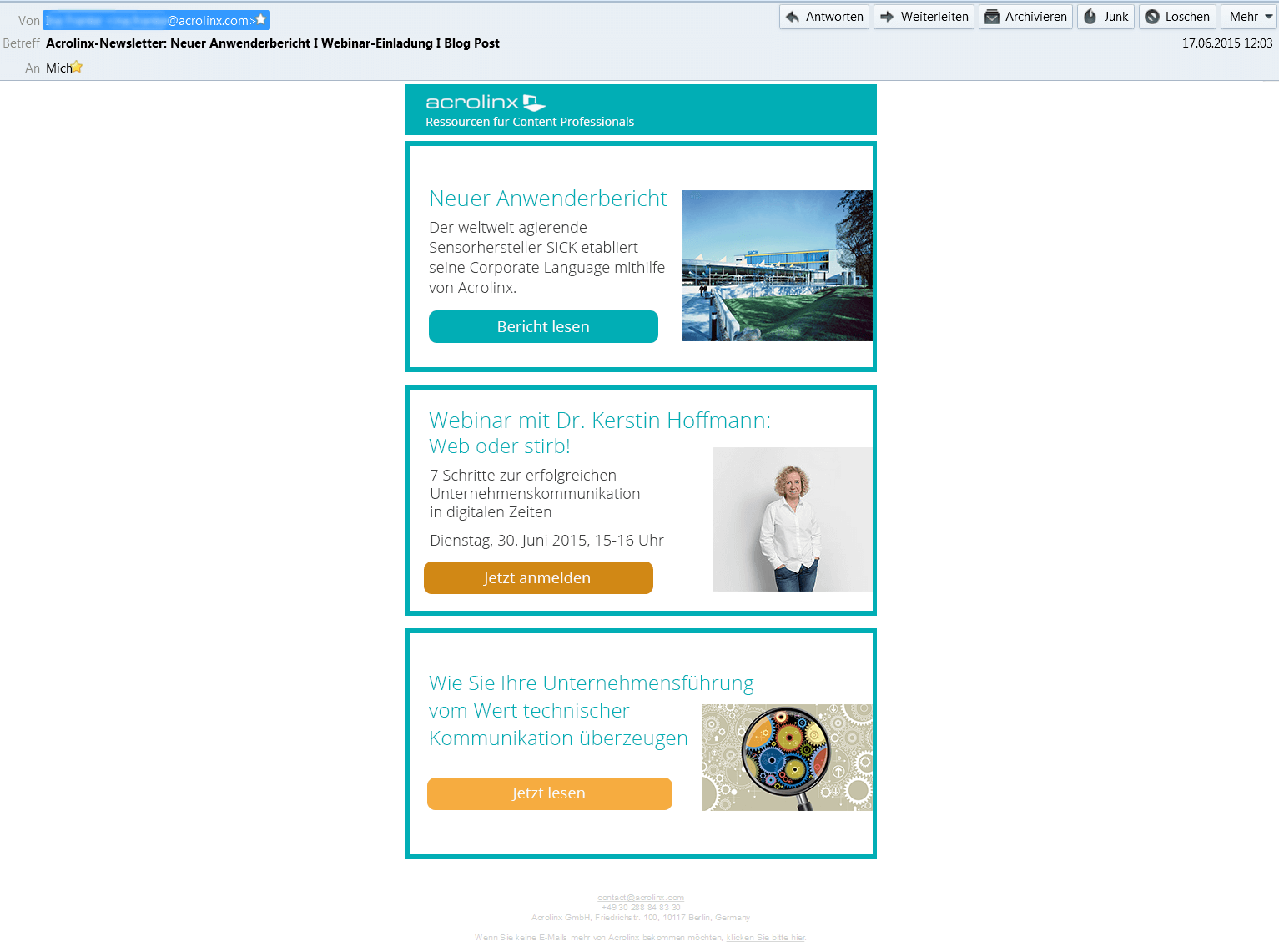
After loading the pictures: The email looks really good and invites you to click
Use embedded images and do not present relevant text as an image
Contentless e-newsletters often consist of one or more large and linked images. In the example shown, even the entire copy text had been integrated into the images, which led to no content being displayed. A display test using the most popular e-mail clients set to withhold images would have shed light on the problem before the mailing was sent out.
With very little effort, the e-newsletter can be significantly improved.
- To create e-newsletters, use templates which you can easily create in, for example, Inxmail.
- Insert your copy text as text and not as an image.
- Compress and embed the company logo with an image compressing program, such as TinyPNG.
This will let your e-newsletter look great and interest your recipients even without them having to actively retrieve images. By combining linked and embedded, compressed images, the file size of your e-newsletter will remain below the maximum size of 150 kB that Inxmail recommends. However, we have not noticed any adverse effects even when the file size was 300 kB.
Four useful tips for creating successful e-newsletters
- When creating an e-newsletter, always assume worst case circumstances. How will the e-newsletter look if the recipient’s e-mail client does not automatically display linked images?
- Always perform a display test for newly created e-newsletters. This lets you detect display issues before dissemination to your recipients, allowing you to make corrections if needed.
- Compress images. Each kB counts because compressing improves the delivery rate of your e-newsletter.
- For each image, determine an alternative (“alt”) text. This gives the reader at least an impression of what to expect before loading remote images.
Consult me on how to use e-newsletters appropriately
Which technique do you use for your e-newsletters? Embedded or linked images or a combination of the two? I would gladly support you in optimising your e-newsletter.



